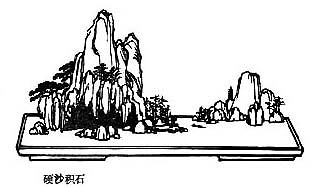Sun Zi 
 – The Art of War
– The Art of War
Chinese strategy explained : know yourself and the ennemy, use deception, spies, and "win with ease". Tr. Giles (en, annotated) and Amiot (fr).
Weak Points And Strong
Chang Yu attempts to explain the sequence of chapters as follows: "Chapter IV, on Tactical Dispositions, treated of the offensive and the defensive; chapter V, on Energy, dealt with direct and indirect methods. The good general acquaints himself first with the theory of attack and defense, and then turns his attention to direct and indirect methods. He studies the art of varying and combining these two methods before proceeding to the subject of weak and strong points. For the use of direct or indirect methods arises out of attack and defense, and the perception of weak and strong points depends again on the above methods. Hence the present chapter comes immediately after the chapter on Energy."
Sunzi VI. 10.
Knowing the place and the time of the coming battle, we may concentrate from the greatest distances in order to fight.1
But if neither time nor place be known, then the left wing will be impotent to succor the right, the right equally impotent to succor the left, the van unable to relieve the rear, or the rear to support the van. How much more so if the furthest portions of the army are anything under a hundred li apart, and even the nearest are separated by several li!2
Giles VI.19,20.
Ce n'est pas tout. Comme il est essentiel que vous connaissiez à fond le lieu où vous devez combattre, il n'est pas moins important que vous soyez instruit du jour, de l'heure, du moment même du combat ; c'est une affaire de calcul sur laquelle il ne faut pas vous négliger. Si l'ennemi est loin de vous, sachez, jour par jour, le chemin qu'il fait, suivez-le pas à pas, quoique en apparence vous restiez immobile dans votre camp ; voyez tout ce qu'il fait, quoique vos yeux ne puissent pas aller jusqu'à lui ; écoutez tous les discours, quoique vous soyez hors de portée de l'entendre ; soyez témoin de toute sa conduite, entrez même dans le fond de son cœur pour y lire ses craintes ou ses espérances. Pleinement instruit de tous ses desseins, de toutes ses marches, de toutes ses actions, vous le ferez venir chaque jour précisément où vous voulez qu'il arrive. En ce cas, vous l'obligerez à camper de manière que le front de son armée ne puisse pas recevoir du secours de ceux qui sont à la queue, que l'aile droite ne puisse pas aider l'aile gauche, et vous le combattrez ainsi dans le lieu et au temps qui vous conviendront le plus. Avant le jour déterminé pour le combat, ne soyez ni trop loin ni trop près de l'ennemi. L'espace de quelques lieues seulement est le terme qui doit vous en approcher le plus, et dix lieues entières sont le plus grand espace que vous deviez laisser entre votre armée et la sienne.
Amiot

The Art of War – Sun Zi VI. 10. – Chinese off/on – Français/English
Alias Sun Tzu, Sun Wu, Sun Tse, Sunzi Bingfa, Souen Tseu, Souen Wou, 孫武.
The Book of Odes, The Analects, Great Learning, Doctrine of the Mean, Three-characters book, The Book of Changes, The Way and its Power, 300 Tang Poems, The Art of War, Thirty-Six Strategies
Welcome, help, notes, introduction, table.
Index – Contact – Top
